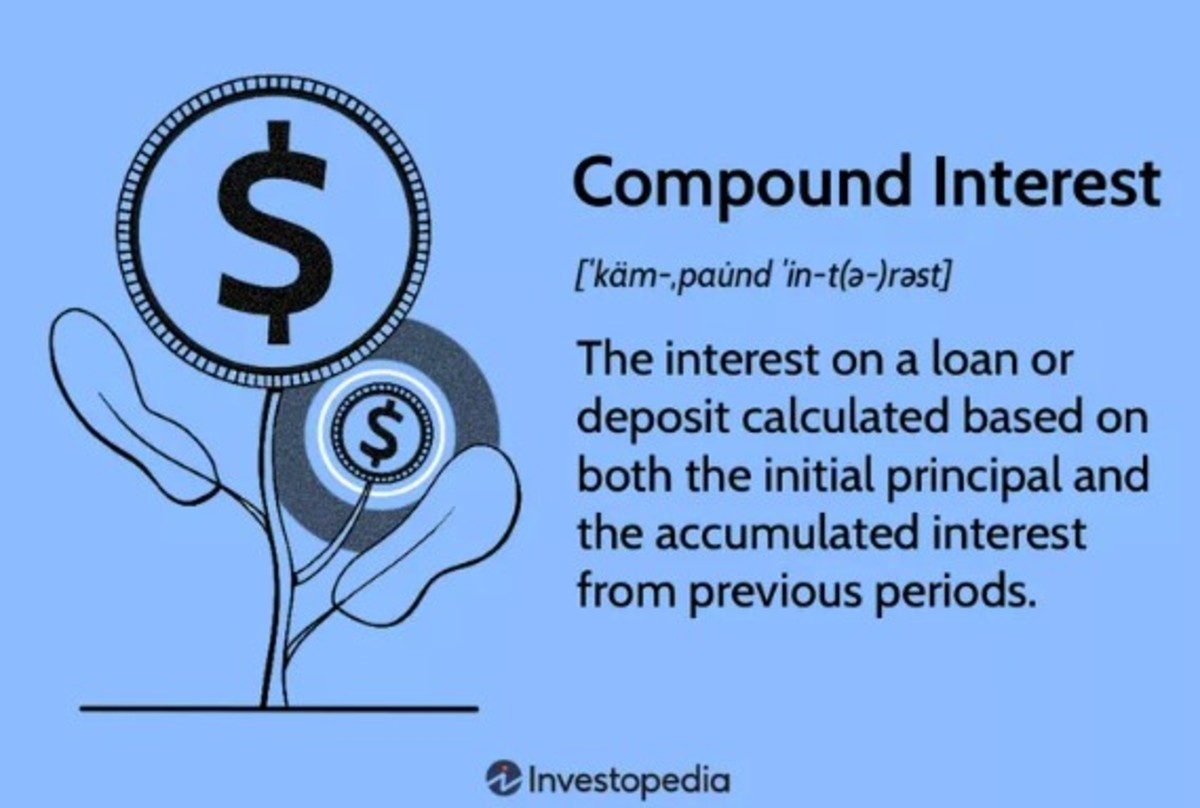Save Young: Teaching Children Money Management
Baby holding money

Money management starts early
Money management issues is an adult thing but children can learn how to manage money more efficiently and learn how to save for the future. Its never to early to teach your child financial responsibility because at an early age they are like sponges, they easily assimilate information which stays with them throughout their lives.
You can start teaching your child money management as early as four years of age, this can be done while teaching them common behavioral etiquette like flushing toilet after use, oral hygiene and so on. Teaching you child money management helps them develop financial knowledge and skills early enough such as cause and effect and target savings.
Money management issue that you can discus with your child could be ways to earn extra income, how to save, where to save, setting realistic goals, and budgeting. Other things that could guide the child might involve the actual opening of a savings account for your child, and teaching your kid how to spend reasonably.
Learning starts early

Money talk
Children are good listeners and they are more aware of happenings around the home than you think, when your finances are down they know because certain privileges they enjoyed become greatly reduced. The need to know about financial issues equips them with basic knowledge and gives them an insight to our current financial challenges.
Talking money and financial issue in the presence of your kid is one strategy you can use to educate the child on money management, speaking plainly and in layman terms opens their mind to money issues. Children that are exposed to money talk in the advent of a job loss or tough financial situations know the reason things suddenly become tough.
A cut back in goodies and sweets, a school change, lower living standards are things the child would associate with money matters if you take your time to explain financial issues with them.
The lower financial status is easier accepted and handled when the child understands the basic dynamics between work and money. While teaching the child money management you can show them the benefits of delayed gratification, like explain why personal saving or target savings work.
If the child is interested in a particular toy or game, you can encourage the kid to save towards buying the game and promise to match what ever he saves towards obtaining the toy. This method works nicely because it teaches the child how to saving and they learn delayed gratification while showing the kid how to stretch his meager funds.
Saving money images
Click thumbnail to view full-size


Saving options for kids
Bank
| Minimum deposit
| Interest
|
|---|---|---|
CUTMA/UTMA
| $25
| 0.05%
|
kID SAVING
| $ 10
| 0.40%
|
MINOR SAVINGS
| $25
| 0.05%
|
Opening a savings account for your kid
Opening a children’s savings account is a very effective way of introducing the child to a culture of savings, you can teach the child how to save with a view of capital appreciation. Encourage them to be financially independent, set goals, track interests on their savings and use target saving to buy things for themselves.
The child can learn how save a potion of their allowance in a commercial savings bank and understand what it takes to formulate a spending plan, let the child decide on how much he wants to save thereby allowing the child have some financial responsibility. The percentage the child wishes to save should be solely his responsibility, allow the child make spending mistakes then explain why a better more frugal plan works.
Teach the child target saving towards specific goals; if the child manages to save the amount he needs without help and buys the item or equipment then he would have a sense of accomplishment and pride. Nurturing habitual savings would over time become a natural investment process for the child as he grows older.
Summary of teaching your child money management
Teaching your child money management can be done through the following methods
1 Introduce the child to savings by buying a piggy bank
2 Allow the child earn wages towards accomplishing certain goals
3 Talk money in the presence of your kid
4 Make a good budget plan together
5 Open a savings account for the kid
6 Learn to praise the Childs accomplishments
7 Teach the child how to set reasonable goals
8 Build a savings goal chart
9 Allow the child set personal goals
10 Let your child learn from your example
11 Let the child make mistakes, learning from them breed’s character.
12 Make saving fun through charts, diagrams, illustrations and picture
13 Help the child manage the savings in a more profitable way.
14 Offer incentives to encourage a saving culture like matching the sum the child saves.
Opening the savings account for your child
When you want to open a savings account for your child it makes sense to take the child along so they are involved in the process from the get go, many banks offer juicy incentives for juvenile banking because they are the bankers of tomorrow.
Different banks have different platforms that handle kids savings most have minimum deposit balance, of between $0 and $300 and their interest rates vary from 0.05% to 0.50%. The more common type of kid saving is a kind of joint savings for the child between the parent and the child although some countries have banks that allow only the child.
The most common account for children in America is the CUTMA account which is a joint account between parent and child, the account is usually operated by the parent and is legally handed over to the child when he attains the age of eighteen (18) or twenty one (21). The Bank of America has the custodian savings account the UTMA which generates interest, allows money check transfers and has a minimum account balance of $25.
Some other juvenile savings are kids savings account that has $10 minimum and interest of 0.40%, Minor savings $25 min, 0.05% interest, td youth savings account and CIBC youths savings account. All you need to do is find one that you are comfortable with then introduce your child to the world of finance.
Saving box-Piggy Bank

How to teach your child money management
Piggy-bank rock
Children love piggy banks, they might not have full grips of financial savings but they know that the heavier the piggy bank gets the more treats they can buy. Piggy banks are fun, visual, and easy to save and show a practical lesson on saving some of their allowances.
A piggy bank could be an empty jar with a covering, a nicely made piggy toy bank or one that has a lock were access is restricted. Visually pleasing piggy banks are best for young savers because they can also play with their bank.
You can praise your child for his accomplishments, learning how to save responsively isn’t easy so for every goal reached the child deserves a reward. But when you observe slaking, talk earnestly to the child- using reprimand or taking away privileges is not advisable let the child make mistakes its part of learning and growing financial knowledge.
Make a savings chart
The child might be target saving it is necessary to know what the child wants to buy, the price and how long it would take to reach the benchmark sum. Prepare a simple chart highlighting how much of the kids allowance when saved at a certain percentage would accomplish his goal.
Calculate the number of weeks, days or months needed by allocating separate money jars to each milestone according to the number of weeks needed. If what the kid wants to buy is rather expensive then you can volunteer to match his savings if he can get half the cost.
Help the child set reasonable goals that he can readily achieve and with each achievement the kid’s confidence and understanding of the saving culture increases.
Let your child learn by your example
Learning through watching there parents actions is quite normal, so lead by example by showing the child how to save money while putting some of yours in a savings account. You can even save in jars so the young child might follow by example.
When you want to pay bills it’s a good idea taking your child along while paying the bill explain the reason behind the act, same goes with grocery bills and other payments, by practically demonstrating financial issues the child starts understanding the dynamics between money and everyday living.
Teach them how to earn money
Allow mistakes
During the course of any financial planning there are bound to be mistakes, adults make mistakes why not kids. Encourage the kid after a financial loss due to recklessness and overspending is necessary, you can educate them on better ways to handle financial decisions and expenditure
Don’t scold them when they make financial mistakes technical it’s their money after all.
Help them spend their hard earned funds
Children might be in a dilemma when it comes to spending, they might be overwhelmed with decisions and what to buy, helping them organize their wants according to their financial involvement. It is better for the child to choose only one item at a time while saving and with each accomplishment he would start new target savings himself.
Develop a budget
The child has to learn how to use money available to him to save and work out a spending plan over a period of time. Being careful and having responsibility are ways to teach the child money management. A budget only works when a certain percentage of the kid’s allowances or earnings are saved, developing a practicable, easy to understand and graphic chart can be fun as well as educational.
Teach them how to earn income
Teaching your child the basics of earning income would prepare the child for future challenges, offer financial rewards for simple tasks and age appropriate chores. Small rewards for domestic chores would reinforce the interplay between money and hard honest work.
If they are disposed to buying certain toys, you can help them earn it by offering financial reward and encouraging savings towards getting the particular item.
Let them Earn wages to buy their favorite toys

Conclusion
Teaching your child money management skills can start as early as four years of age, they are very receptive and eager to learn new things. A parent has the responsibility to educate their child in money management skills in order to equip them for greater challenges in the future.
Learning to save teaches them responsibility and what accumulated funds can accomplish, setting goals self deprivation and target savings build character and makes the child more confident. If they fail to meet certain goals don’t despair they still have many years to improve on their money management skills.
Teach children money management
- How to teach your children the value of saving?
This hub describes how to teach your children the value of saving money at an early stage of life. By following some simple strategies and giving them responsibilities in regular life you may successfully impart in them the value of saving money. Thi - How to Make Money using your Smartphone
How to make money using your Smartphone. Get paid ... Companies. websites and individuals have found new and exciting ways to use phone Apps to earn income. - Interesting Ways to Make Money Surfing the Web
Make Money Surfing is an interesting way to make a few dollar, it is fun easy to sign up and participate with various rewards like holidays, vouchers.











